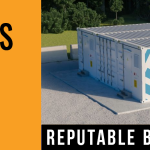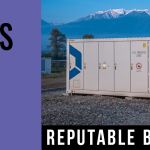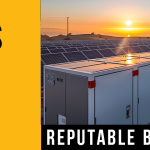 New York could go the extra mile under the energy storage roadmap released at the end of June.
New York could go the extra mile under the energy storage roadmap released at the end of June.
The plan supports Democratic Gov. Andrew Cuomo’s energy storage target of 1,500 MW by 2025, but several sources say the final plan could call for an even more ambitious target. Reaching that target, though, could involve challenges that are largely outside of the scope of New York energy agencies.
The roadmap identifies near‐term policies, regulations, and initiatives needed to realize the governor’s 2025 target in anticipation of a 2030 target to be established later this year by the state’s Public Service Commission.
While higher storage targets will help with the growth of storage, the roadmap also addresses critical needs for clearer permitting guidelines. Progress for indoor siting is essential for deployment in congested areas like New York City, according to Doug Staker, vice president at energy storage developer Enel-X.
Shooting above the governor’s target
“The roadmap’s conclusion that the deployment of 2.8 GW to 3.6 GW of energy storage by 2030 would produce $3 billion in ratepayer benefits reinforces our expectation that the New York Public Service Commission could establish this December a 2030 storage target that builds upon and may likely exceed” Gov. Cuomo’s 1.5 GW by 2025 target, Timothy Fox, vice president at ClearView Energy Partners, told Utility Dive via email.
“We see the ability to go up to 3,000 MW.”
Bill Acker
Executive director of the NY-BEST consortium
The 2,800 MW to 3,600 MW number laid out in the roadmap was the result of analysis by consulting firm Acelerex that examined system needs that can be met by energy storage in a least‐cost combination of resources as New York approaches its 50% by 2030 renewable portfolio standard target.
The report also says that analysis was “limited in its distribution system detail and consequently neither reflects an upper bound of ratepayer benefit nor maximizes the amount of storage that can be deployed in the state.”
“We see the ability to go up to 3,000 MW,” Bill Acker, executive director of the New York Battery and Energy Storage Technology consortium (NY-BEST), told Utility Dive. He said the document provides “a pathway” to reach a larger storage target by 2030.
The final target will “definitely be more than 1,500 MW” at the least because it is five years further out than the governor’s 2025 target, Jason Doling, program manager for energy storage at the New York State Energy Research and Development Authority, told Utility Dive. NYSERDA played a key role in the development of the roadmap.
read more
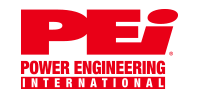 A key factor when planning
A key factor when planning 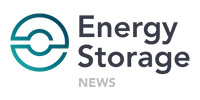 Commercial and industrial (C&I) energy storage in Europe, described by one analyst as “beginning to take off”, is the “most exciting” segment of the market at the moment, according to BYD’s global service partner.
Commercial and industrial (C&I) energy storage in Europe, described by one analyst as “beginning to take off”, is the “most exciting” segment of the market at the moment, according to BYD’s global service partner. If you’ve been paying attention to the debate about lithium-ion battery materials, then you will know there is a
If you’ve been paying attention to the debate about lithium-ion battery materials, then you will know there is a  CellCube Energy Storage Systems Inc. (“CellCube” or the “Company”) (CSE: CUBE) (CSE: CUBE.CN) (OTCQB: CECBF) (
CellCube Energy Storage Systems Inc. (“CellCube” or the “Company”) (CSE: CUBE) (CSE: CUBE.CN) (OTCQB: CECBF) ( According to
According to  2017 WAS A BREAKOUT YEAR for battery-based energy storage in the US electric utility space. With 431MWHr of new capacity added during the year, it nearly doubled the total of existing prior amounts, with the total now exceeding 1GWHr of storage. 2018 should again double the total installation, with the total then to exceed 2GWhr. Both behind the meter and front-of-the-meter areas are growing, and by 2019, the US market for energy storage should exceed $1.2 billion, according to GTM and the Energy Storage Association.
2017 WAS A BREAKOUT YEAR for battery-based energy storage in the US electric utility space. With 431MWHr of new capacity added during the year, it nearly doubled the total of existing prior amounts, with the total now exceeding 1GWHr of storage. 2018 should again double the total installation, with the total then to exceed 2GWhr. Both behind the meter and front-of-the-meter areas are growing, and by 2019, the US market for energy storage should exceed $1.2 billion, according to GTM and the Energy Storage Association. A new study led by chief scientist Alan Finkel has underlined Australia’s role as a leader in the household battery storage sector, and says Australia can, and should, be a leader of energy storage of all types, including renewable hydrogen as an export opportunity.
A new study led by chief scientist Alan Finkel has underlined Australia’s role as a leader in the household battery storage sector, and says Australia can, and should, be a leader of energy storage of all types, including renewable hydrogen as an export opportunity.